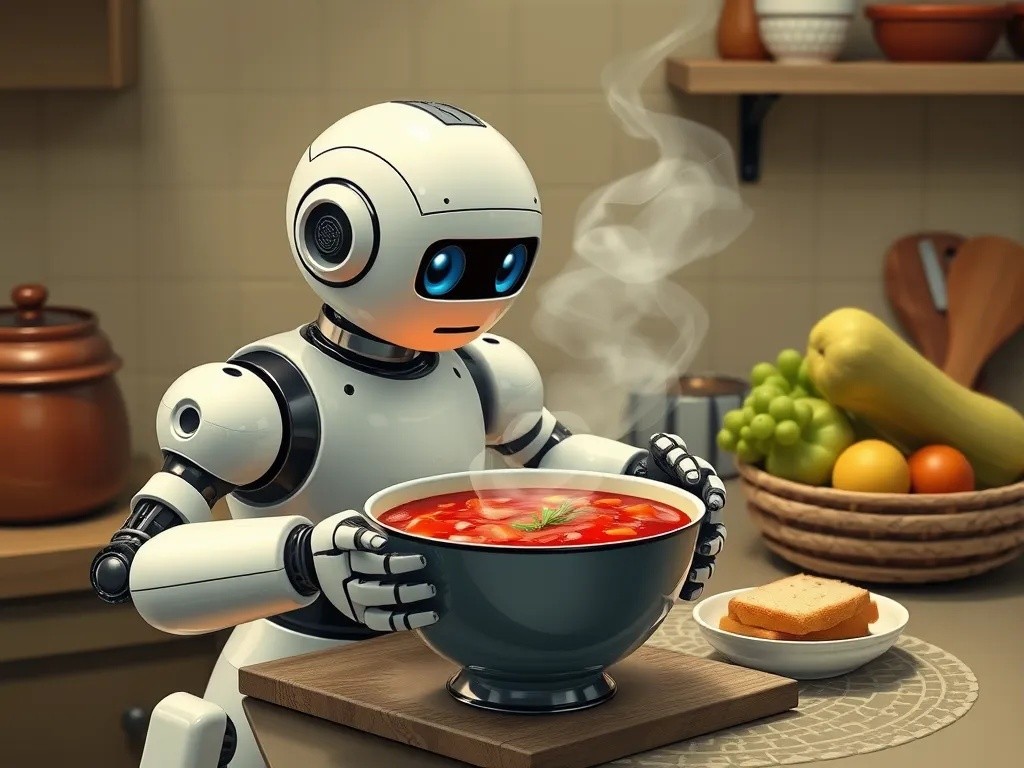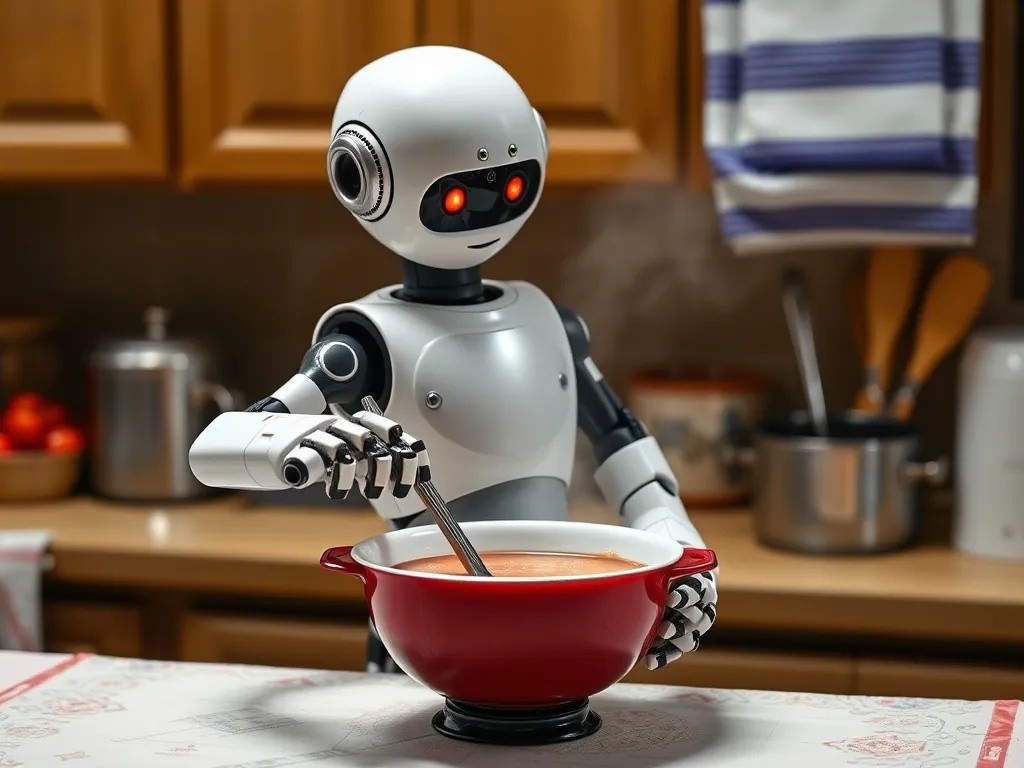In recent years, there has been a significant advancement in the field of Artificial Intelligence (AI) and Augmented Reality (AR). These technologies have become increasingly popular and have the potential to enhance virtual experiences in various fields such as gaming, education, healthcare, and...
Robot Learned to Cook Borscht Using Great-Grandmother's Recipe

In a remarkable fusion of cutting-edge technology and cherished family tradition, researchers have successfully programmed a culinary robot to prepare authentic borscht using a recipe passed down through four generations. This breakthrough represents a significant milestone in artificial intelligence's ability to preserve and replicate cultural heritage through food.
The Digital Preservation of Culinary Heritage
The project began when Maria Petrov, a software engineer from Kyiv, decided to digitize her great-grandmother's handwritten recipe collection. Among the yellowed pages was a detailed borscht recipe dating back to 1924, complete with measurements in old Ukrainian units and cooking techniques that had been refined over decades of practice.
"My great-grandmother's borscht was legendary in our family," Petrov explained. "She never wrote down exact measurements – everything was 'a pinch of this' or 'until it looks right.' The challenge was teaching a machine to understand these intuitive cooking methods."
Technical Challenges and Solutions
Converting Intuitive Measurements
The research team faced several complex challenges in translating the century-old recipe into machine-readable instructions:
- Converting traditional measurements like "one glass" and "a handful" into precise metric units
- Programming visual recognition to identify proper vegetable consistency and color changes
- Teaching the robot to adjust cooking times based on real-time sensory feedback
- Implementing taste-testing capabilities through advanced chemical sensors
Advanced Sensory Integration
The robot, dubbed "Babusya" by the development team, utilizes multiple sensors to replicate human cooking intuition. High-resolution cameras monitor color changes in the broth, while temperature sensors ensure optimal cooking conditions. Most impressively, the robot employs chemical analysis to detect the perfect balance of sweet, sour, and savory flavors that characterize authentic borscht.

The Cooking Process
Babusya's borscht preparation follows the traditional sequence with remarkable precision. The robot begins by roasting fresh beets until they achieve the deep crimson color specified in the original recipe. It then prepares a rich beef broth, carefully monitoring the cooking time to extract maximum flavor without overcooking the meat.
The vegetable preparation showcases the robot's most sophisticated capabilities. Using computer vision, Babusya identifies and processes each ingredient according to the recipe's specifications – julienning carrots to the exact thickness, dicing onions uniformly, and shredding cabbage with consistent texture.
The Secret Ingredient: Patience
Perhaps most remarkably, the robot has been programmed to understand the importance of patience in traditional cooking. Unlike modern fast-food preparation, authentic borscht requires slow simmering to develop its characteristic depth of flavor. Babusya monitors the cooking process continuously, adjusting heat levels and timing based on real-time analysis of the broth's development.
Cultural Impact and Future Applications
The successful borscht project has generated significant interest from cultural preservation organizations worldwide. The technology demonstrates how artificial intelligence can serve as a bridge between generations, ensuring that traditional recipes and cooking techniques are not lost to time.
Food historians praise the project's potential for documenting endangered culinary traditions. "This technology could revolutionize how we preserve food culture," noted Dr. Elena Kowalski, a specialist in Eastern European cuisine. "Many traditional recipes exist only in the memories of elderly cooks. This robot could help capture that knowledge before it disappears."
Looking Forward
The research team plans to expand the project to include other traditional dishes from various cultures. They are currently working on programming the robot to prepare pierogi, another beloved recipe from Petrov's great-grandmother's collection.
While technology continues to advance at breakneck speed, projects like Babusya remind us that innovation can serve to honor and preserve our past, ensuring that the flavors and traditions that connect us to our ancestors remain alive for future generations to experience and enjoy.
As Maria Petrov watched the robot serve its first perfect bowl of borscht, she smiled, knowing that her great-grandmother's legacy would continue to nourish families for generations to come – now with the help of artificial intelligence.



